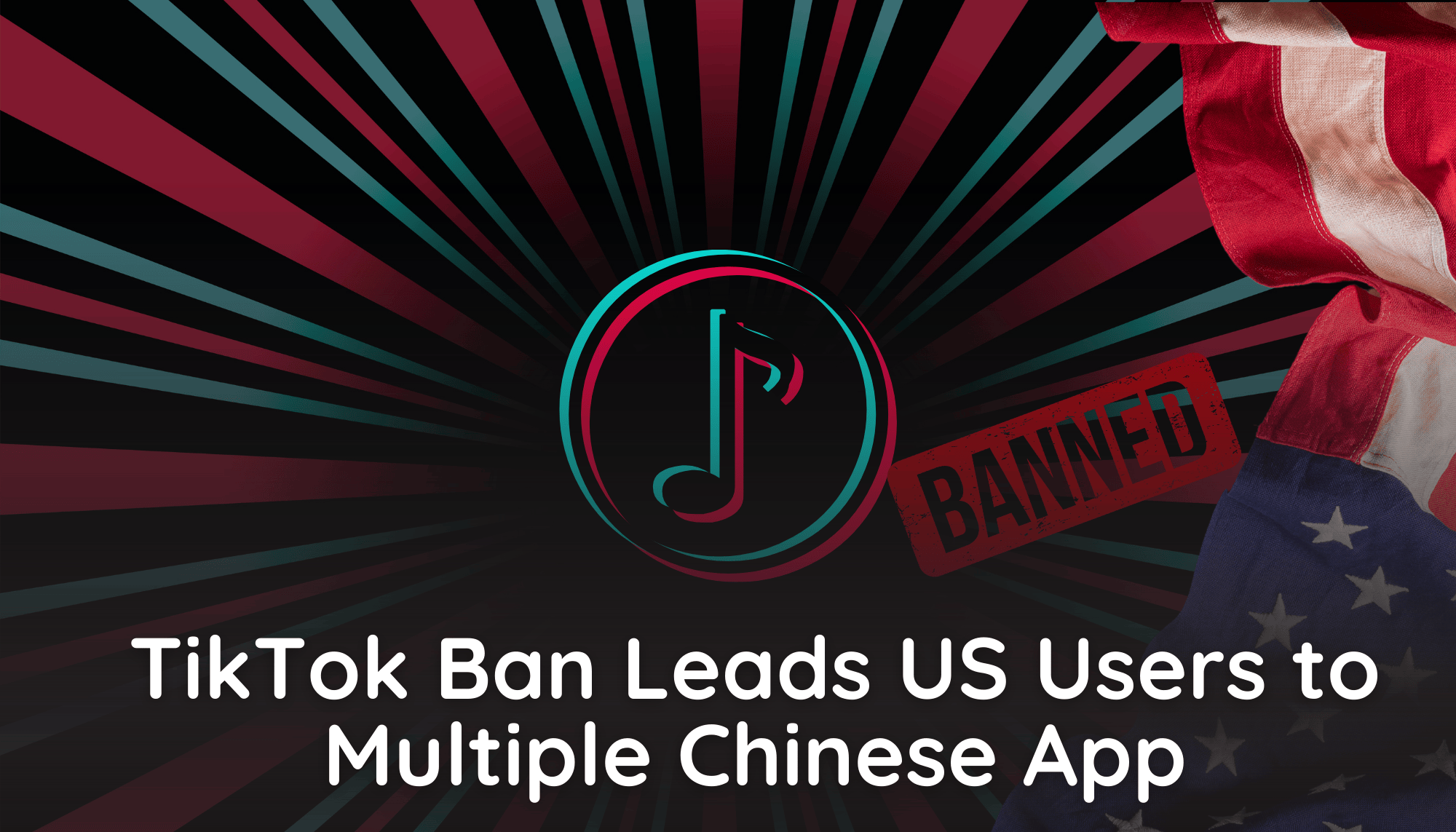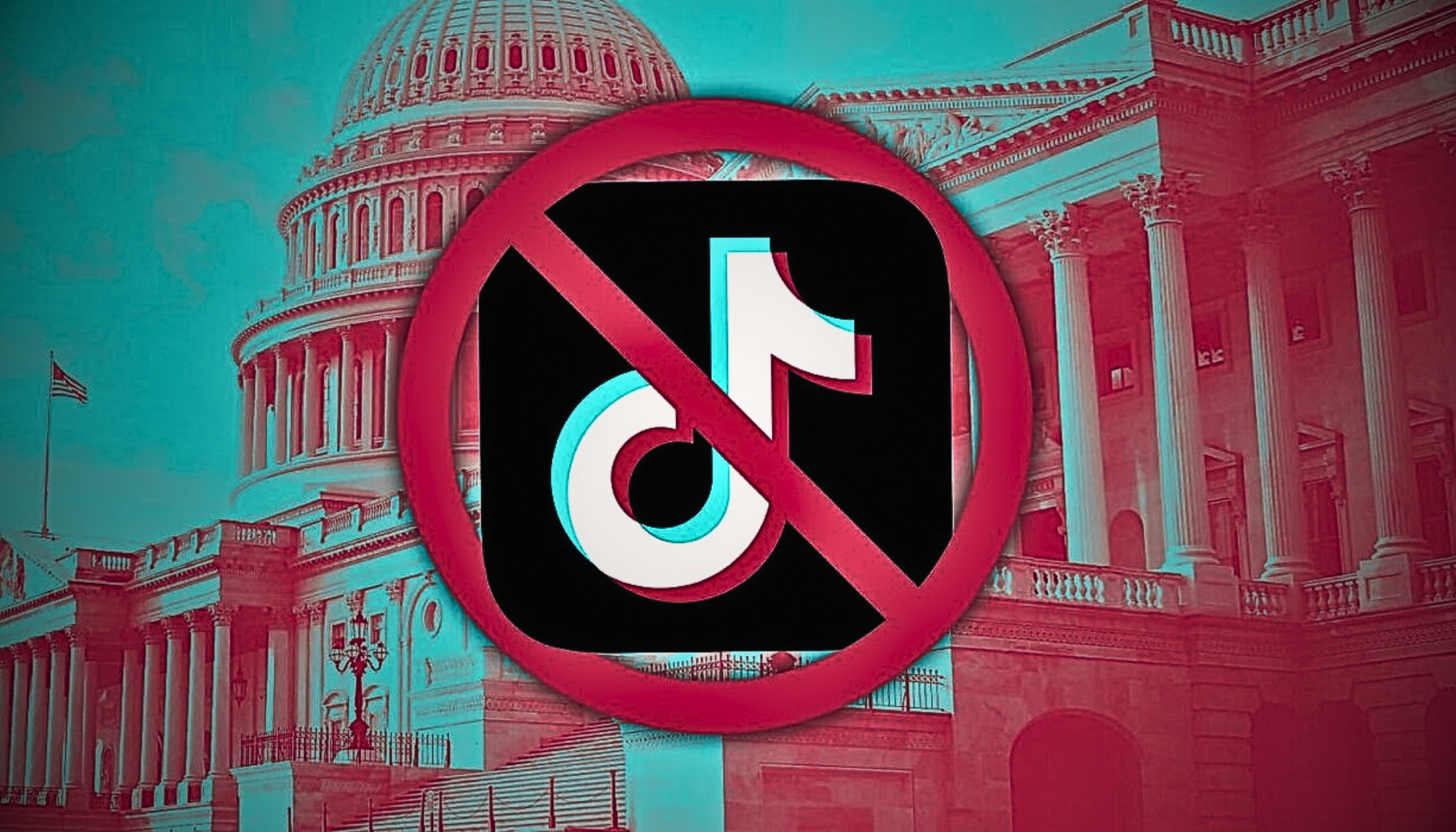TikTok Ban Leads US Users to Multiple Chinese Apps
Smash Code
Jan 29, 2025

TikTok's dominance has been undeniable, but the threat of a ban has opened the door for a new wave of Chinese apps to gain popularity in the US. From short-form video platforms to social media giants, these apps are vying for user attention.
In this blog, we'll explore the rise of these alternative apps and discuss what this means for the future of social media.
TikTok became unavailable to U.S. users, just before a ban on the platform took effect.
When users opened the app that night, they saw the message, “Sorry, TikTok isn’t available right now.” It further stated, “A law banning TikTok has been enacted in the U.S. Unfortunately, this means you can’t use TikTok for now. We are fortunate that President Trump has indicated he will work with us on a solution to reinstate TikTok once he takes office. Please stay tuned!”
A spokesperson for President-elect Donald Trump's transition team did not immediately respond to requests for comment about the app's notification.
The message prompted users to either close the app or learn more, with an additional note on the landing page stating they could still log in to download their data.
The app also appeared to have been removed from Apple’s and Google’s app stores, making it unavailable for download.
Reasons of Tik Tok Ban
The potential TikTok ban in the US stems from several primary concerns.
One major concern is national security. Lawmakers worry that user data collected by TikTok could be accessed by the Chinese government, potentially jeopardizing national security. This fear arises from the fact that ByteDance, TikTok's parent company, is based in China, raising concerns about potential government surveillance.
Another significant concern is data privacy. Questions have been raised about how TikTok handles user data, including the possibility of sharing sensitive information with third parties or foreign governments.
Furthermore, content moderation on the platform has been a subject of criticism. Critics argue that the app could be used to spread misinformation or propaganda, potentially influencing American users and public opinion.
Finally, the platform's immense popularity among young users has raised concerns about its impact on youth. These concerns include potential negative effects on mental health, privacy risks, and exposure to inappropriate content.
These factors have fueled ongoing discussions and legislative efforts in the US, with proposals ranging from outright bans to the imposition of strict regulations on TikTok's operations within the country.
Rise of Chinese Apps: RedNote or Xiaohongshu
After the ban some other Chinese apps are gaining traction and users are switching to them rapidly. For example, RedNote, which is also referred to as Xiaohongshu, has made a remarkable ascent to the top of both Apple’s App Store and Google’s Play Store. This app, based in China, shares similarities with Instagram and has gained considerable popularity for its focus on sharing various tips related to travel, makeup, and fashion. A significant number of American users who have recently joined the platform have indicated that their decision was made in direct defiance of the US government's ban on TikTok, citing concerns regarding national security tied to its Chinese parent company.
Xiaohongshu functions as a vibrant and engaging hub where users can share their experiences, write reviews, and offer recommendations, particularly focusing on areas such as fashion, beauty, travel, and product discoveries. One of the standout features of Xiaohongshu is its seamless integration of e-commerce, which allows users to purchase highlighted products directly through the app with ease. This unique combination of social interaction and online shopping creates a dynamic and engaging experience for users. The platform actively encourages community engagement through various interactive features, including following, liking, commenting, and saving posts, which helps cultivate a strong sense of belonging among its user base. In addition, Xiaohongshu supports a wide array of content formats, such as photos, videos, and text, enabling users to express themselves creatively and share their stories in a multifaceted and rich manner.
In contrast, Lemon8 places a strong emphasis on visually appealing content. It serves as a sanctuary for users who have a keen appreciation for aesthetically pleasing photos and videos, offering a variety of filters and editing tools that enhance their creative expressions. The platform organizes content into numerous categories, making it easier for users to discover specific interests and allowing for effortless exploration of diverse topics. Lemon8 also provides a valuable platform for influencers to collaborate and engage with brands, mirroring the influencer marketing strategies that are prevalent on platforms like Instagram, which has become a cornerstone of social media marketing.
At their core, both Xiaohongshu and Lemon8 revolve around the concepts of community and user-generated content. However, they diverge significantly in their core functionalities and their emphasis on design aesthetics. Xiaohongshu distinctly emphasizes e-commerce integration, making it the preferred platform for users who are particularly interested in discovering and purchasing products. On the other hand, Lemon8 leans more towards curated, visually driven content, which appeals to users who prioritize aesthetics and visual storytelling over transactional experiences.
Reactions to Tik Tok Ban

User reactions to the potential TikTok ban in the United States have been diverse and often laden with emotion, reflecting a wide range of concerns and coping mechanisms among the user base. Many users express profound worry about the possible loss of their online communities, as TikTok has become an essential platform for connecting with friends, sharing creative expressions, and building social circles that are vital to their online lives. In addition, content creators have voiced concerns about the significant impact that a ban would have on their livelihoods. TikTok has emerged as a major platform for brand partnerships and monetization opportunities, and the loss of this income stream could result in severe financial consequences for many creators who depend on it for their income.
In light of the potential ban, users are actively seeking out alternative platforms to continue their social media activities. Many are turning to options like Xiaohongshu, Lemon8, and Instagram Reels, in search of new avenues to share their content and maintain connections with their audiences. Additionally, some creators are strategically cross-promoting their content across various social media platforms to retain their audience and mitigate the potential negative impact of a TikTok ban. This proactive approach demonstrates a willingness to adapt and explore new opportunities in the face of uncertainty.
The looming possibility of a TikTok ban has also ignited a wave of activism among its users. Many actively advocate against the ban by signing petitions and participating in protests to voice their concerns. Furthermore, users are leveraging other social media platforms to spread awareness about the potential consequences of a ban, emphasizing the broader implications for free speech and digital expression that such a ban would entail.
In this uncertainty, many users are coping with the situation through humour and satire. Memes and jokes about the potential ban have proliferated across various social media platforms, reflecting a common coping mechanism for dealing with the anxiety and stress surrounding potential changes in the social media landscape. This humorous approach serves as a way for users to bond over shared concerns and navigate the emotional challenges posed by the situation.
Consequences of TikTok Ban
The potential TikTok ban could have significant ramifications for the social media landscape, potentially accelerating the growth of alternative platforms and influencing user behaviour across various platforms. RedNote is emerging as a notable alternative to TikTok, attracting a steadily growing number of users. While it has not yet reached TikTok's level of popularity or user base, it is gaining traction due to several key factors that are appealing to users.
Firstly, RedNote features a user-friendly interface that is both intuitive and familiar to those who are accustomed to TikTok's layout. This familiarity can ease the transition for users looking for alternatives. Secondly, its focus on short-form video content aligns seamlessly with the existing content creation styles that are popular on TikTok, making it a natural choice for those who enjoy creating and consuming similar types of content. Finally, the app incorporates essential community features such as commenting, sharing, and liking, which foster a social environment that mirrors the interactive nature of TikTok and encourages user engagement.
Nevertheless, RedNote faces certain challenges that it must navigate to achieve sustained growth. The most significant hurdle it encounters is its relatively small user base compared to TikTok. This limited user base can impact content visibility and engagement levels, making it more challenging for creators to gain traction and build their audiences. Additionally, while the diversity of content on RedNote is gradually increasing as more creators join the platform, users may currently find a less varied range of content compared to the extensive library available on TikTok.
Despite these challenges, RedNote is witnessing a surge in downloads, particularly in the wake of discussions surrounding potential TikTok bans. This increased interest has fostered the development of an early adopter community, which is crucial for the app's future growth and sustainability. If RedNote can successfully retain these users and continue to enhance its platform, it has the potential to establish itself as a more significant player in the competitive short-form video market, offering users a viable alternative in the ever-evolving social media landscape.
In summary, the ongoing discussions surrounding the potential ban of TikTok reveal a complex and multifaceted mix of apprehension, anxiety, and adaptive measures as users strive to navigate this uncertain and ever-changing landscape. The unfolding situation has ignited a wide array of emotions and reactions, showcasing the profound and deep connections that users have cultivated with their online communities and the various platforms they engage with regularly. As individuals grapple with the possibility of losing access to a significant part of their social interactions and creative expression, it becomes increasingly evident how integral these digital environments are to their daily lives. This circumstance not only underscores the emotional investment users have in these platforms but also reflects the broader implications of such a ban on their sense of identity and belonging within the virtual realm.